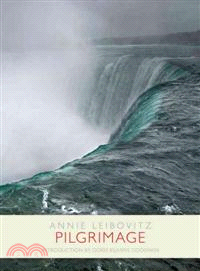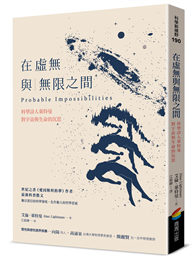從約翰藍儂裸身擁抱小野洋子的合照、黛咪摩爾懷孕裸照、到英國伊麗莎白女皇典雅相片,一張張視覺強烈、令人難忘的影像,都出自有「美國最具影響力女攝影家」之稱Annie Leibovitz之手。總能精準捕捉人物神采的Leibovitz,這次在她全新攝影集《Pilgrimage》有了不同以往的嘗試。整本作品不見她慣常拍攝的名人、超模、大人物,取而代之的是房間一隅與自然風景裡,或沉靜或蠢動、敘說故事的一景一物。
Leibovitz提到自己有次帶三個女兒到尼亞加拉大瀑布玩,孩子們望著瀑布的沉醉表情,讓她萌生想拍攝「地點」的構想。於是她帶著簡便小巧的數位相機,逐一造訪及拍攝對自己有意義的地點與物件,諸如Leibovitz成長地新墨西哥州、大鹽湖、黃石公園、吳爾芙的寫字台及達爾文的奇特標本。這些極具張力的影像,搭配Leibovitz充滿情感的文字,串連起屬於某個時空、或Leibovitz內心深處獨有的記憶。(文/巧比非爾)
Pilgrimage took Annie Leibovitz to places that she could explore with no agenda. She wasn’t on assignment. She chose the subjects simply because they meant something to her. The first place was Emily Dickinson’s house in Amherst, Massachusetts, which Leibovitz visited with a small digital camera. A few months later, she went with her three young children to Niagara Falls. “That’s when I started making lists,” she says. She added the houses of Virginia Woolf and Charles Darwin in the English countryside and Sigmund Freud’s final home, in London, but most of the places on the lists were American. The work became more ambitious as Leibovitz discovered that she wanted to photograph objects as well as rooms and landscapes. She began to use more sophisticated cameras and a tripod and to travel with an assistant, but the project remained personal.
Leibovitz went to Concord to photograph the site of Thoreau’s cabin at Walden Pond. Once she got there, she was drawn into the wider world of the Concord writers. Ralph Waldo Emerson’s home and Orchard House, where Louisa May Alcott and her family lived and worked, became subjects. The Massachusetts studio of the Beaux Arts sculptor Daniel Chester French, who made the seated statue in the Lincoln Memorial, became the touchstone for trips to Gettysburg and to the archives where the glass negatives of Lincoln’s portraits have been saved. Lincoln’s portraitists—principally Alexander Gardner and the photographers in Mathew Brady’s studio—were also the men whose work at the Gettysburg battlefield established the foundation for war photography. At almost exactly the same time, in a remote, primitive studio on the Isle of Wight, Julia Margaret Cameron was developing her own ultimately influential style of portraiture. Leibovitz made two trips to the Isle of Wight and, in an homage to the other photographer on her list, Ansel Adams, she explored the trails above the Yosemite Valley, where Adams worked for fifty years.
The final list of subjects is perhaps a bit eccentric. Georgia O’Keeffe and Eleanor Roosevelt but also Elvis Presley and Annie Oakley, among others. Figurative imagery gives way to the abstractions of Old Faithful and Robert Smithson’s Spiral Jetty. Pilgrimage was a restorative project for Leibovitz, and the arc of the narrative is her own. “From the beginning, when I was watching my children stand mesmerized over Niagara Falls, it was an exercise in renewal,” she says. “It taught me to see again.”
作者簡介
Annie Leibovitz was born on October 2, 1949, in Waterbury, Connecticut. She began her career as a photojournalist for Rolling Stone in 1970, while she was still a student at the San Francisco Art Institute.
Leibovitz became Rolling Stone’s chief photographer in 1973. By the time she left the magazine, ten years later, she had shot 142 covers and published photo-essays on scores of stories, including her memorable accounts of the resignation of Richard Nixon and of the 1975 Rolling Stones tour. In 1983, when she joined the staff of the revived Vanity Fair, she was established as the foremost rock music photographer and an astute documentarian of the social landscape. At Vanity Fair, and later at Vogue, she developed a large body of work that expanded her collective portrait of contemporary life. In addition to her editorial work, she has created several influential advertising campaigns, including her award-winning portraits for American Express and the Gap. She has also collaborated with many arts organizations. Her large and distinguished body of work encompasses some of the most well-known portraits of our time.
Several collections of Leibovitz’s work have been published. They include Annie Leibovitz: Photographs (1983); Annie Leibovitz: Photographs 1970–1990 (1991); Olympic Portraits (1996); Women (1999), in collaboration with Susan Sontag; American Music (2003); A Photographer’s Life, 1990-2005 (2006); and Annie Leibovitz at Work (2008). Exhibitions of her photographs have appeared in museums and galleries all over the world, including the National Portrait Gallery and the Corcoran Gallery in Washington, D.C.; the International Center of Photography in New York; the Brooklyn Museum; the Stedelijk Museum in Amsterdam; the Maison Europeenne de la Photographie in Paris; the National Portrait Gallery in London; the State Hermitage museum in St. Petersburg, Russia; and the Pushkin Museum of Fine Arts in Moscow.
Leibovitz is the recipient of many honors, including the International Center of Photography’s Lifetime Achievement Award, the American Society of Magazine Editors’ first Creative Excellence Award, and the Centenary Medal of the Royal Photographic Society in London. She was decorated a Commandeur in the Ordre des Arts et des Lettres by the French government and has been designated a Living Legend by the Library of Congress. She lives in New York with her three children, Sarah, Susan, and Samuelle.












